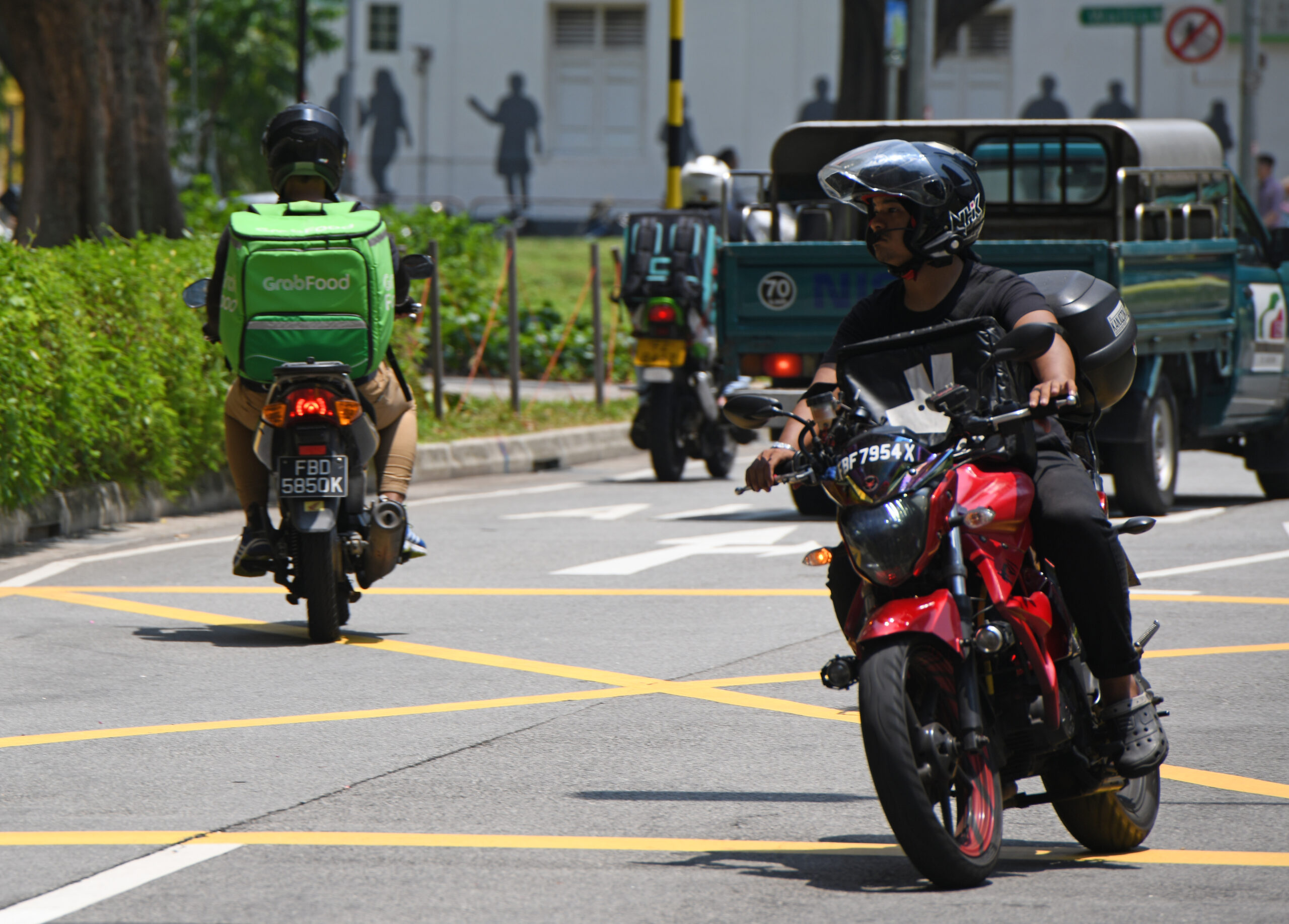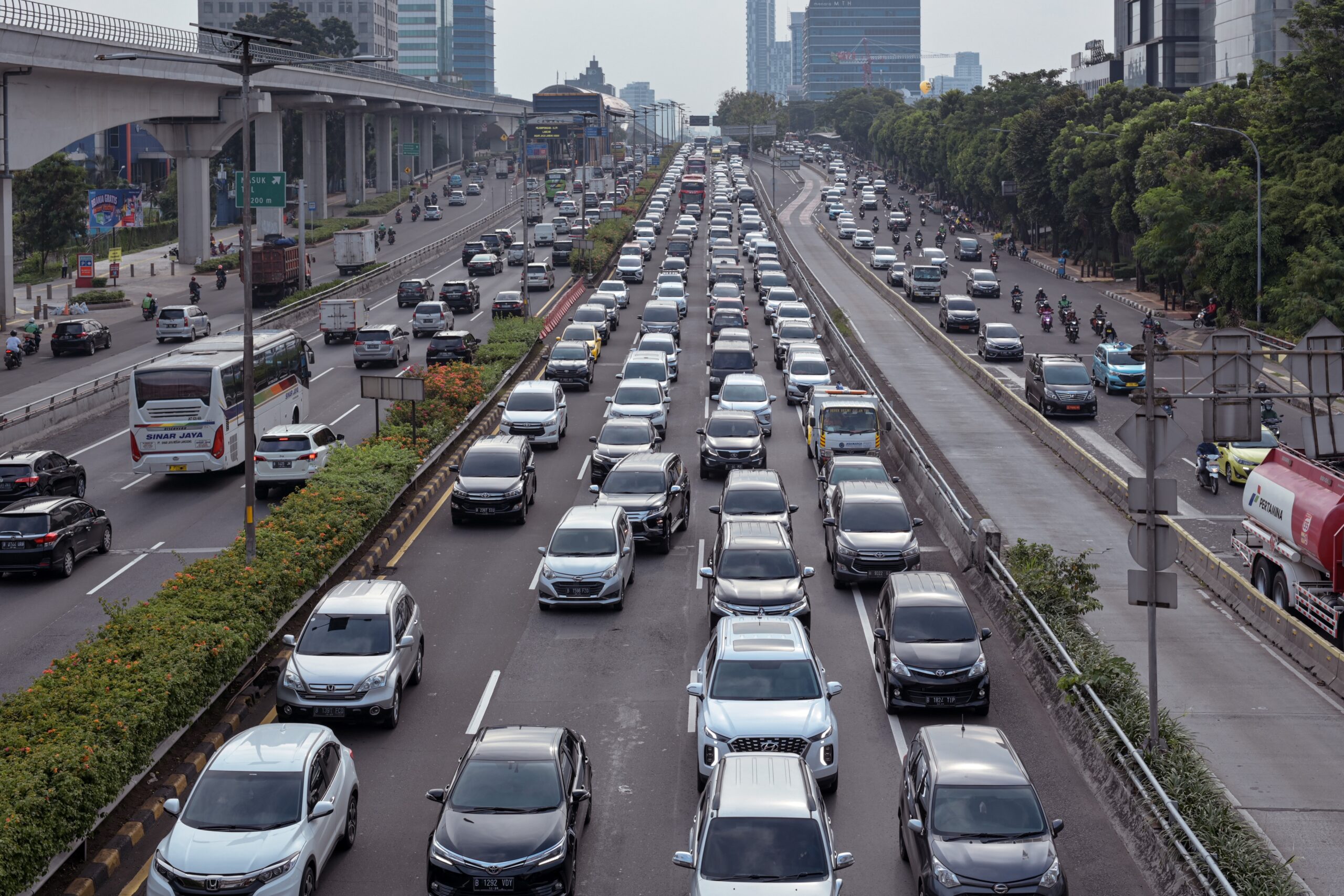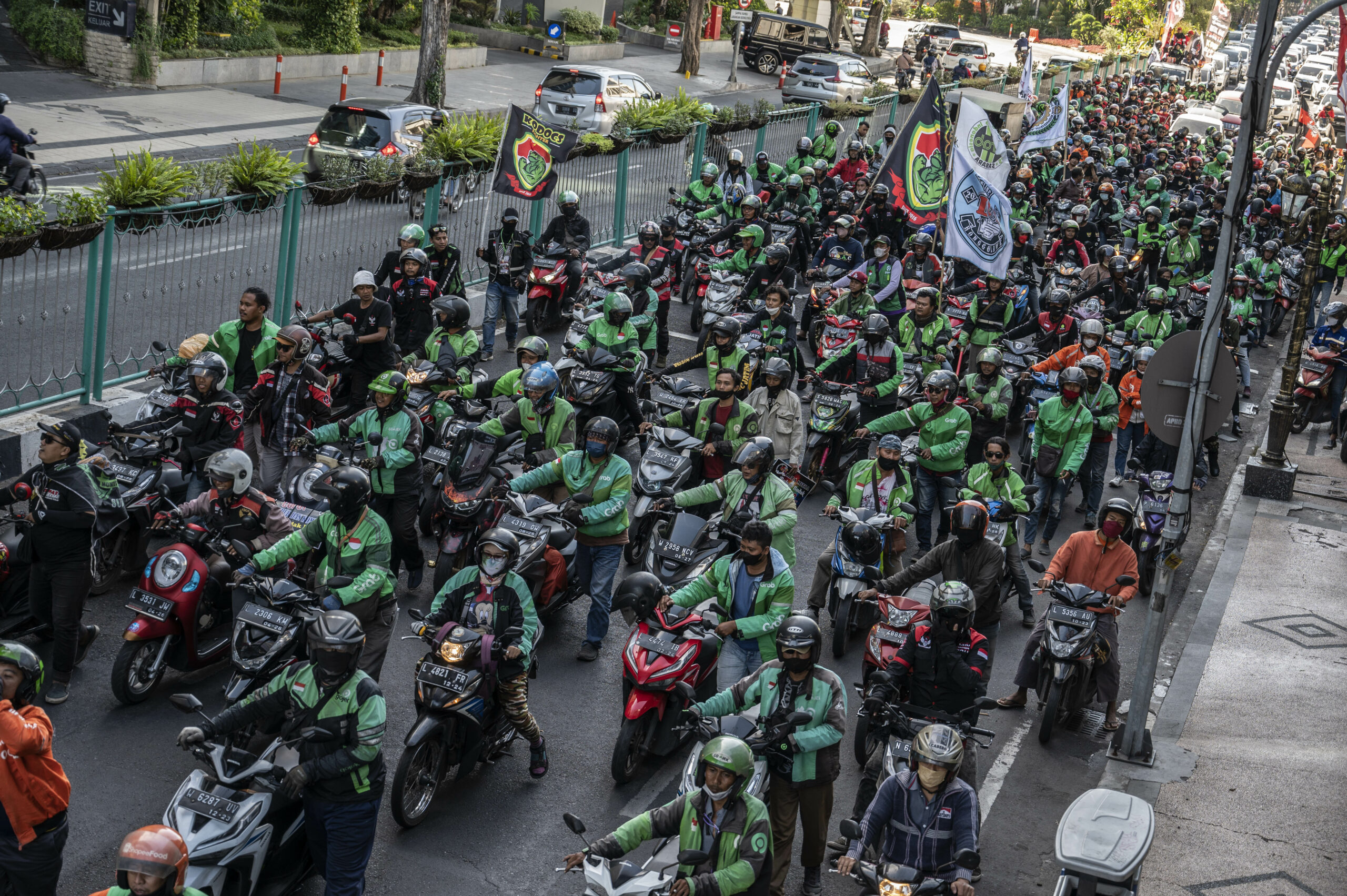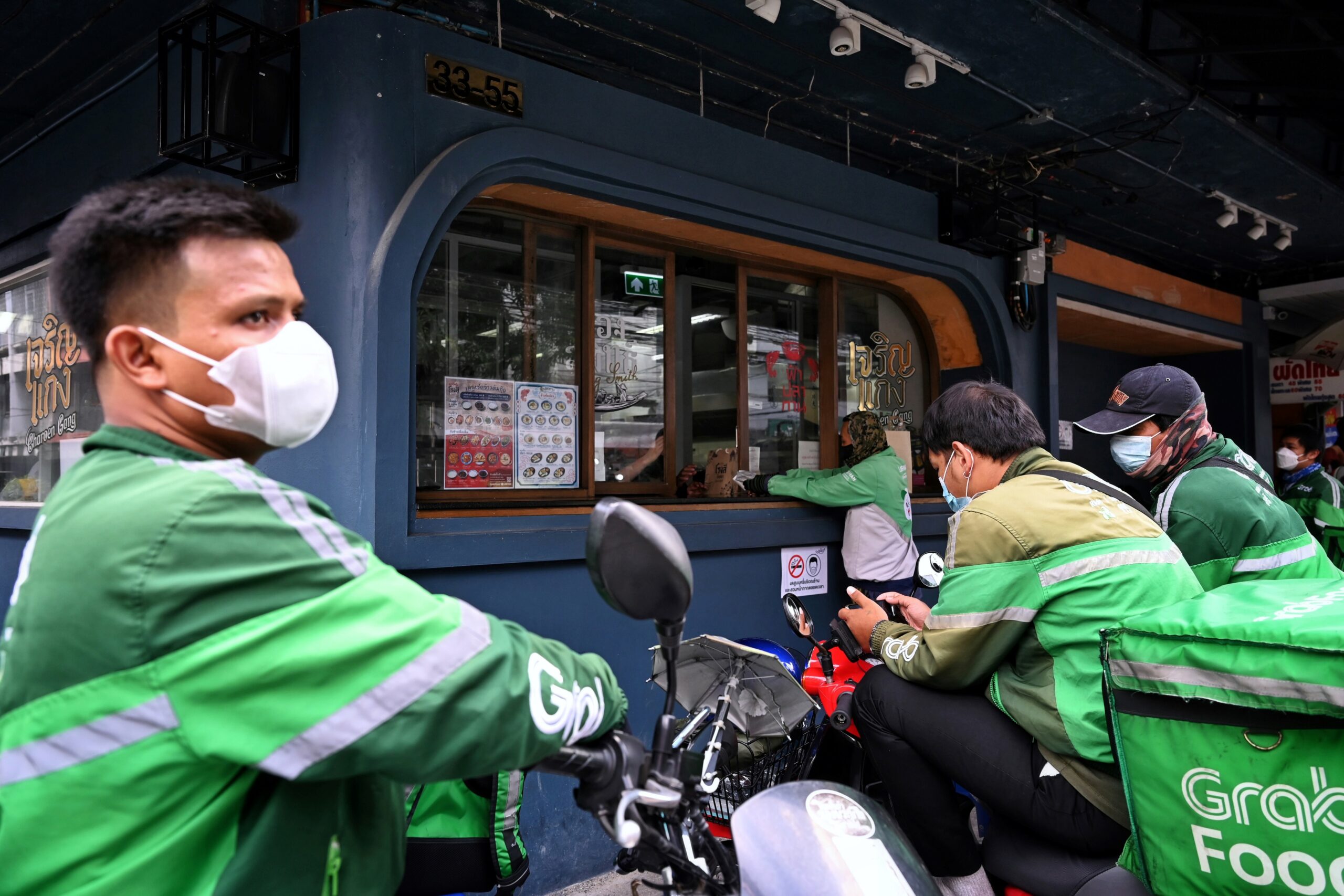In July, Roger Goh was hit by a car on his motorbike while delivering an order for foodpanda in Singapore. He was left with a deep gash on his leg that required a two-month-long hospital stay and multiple surgeries. But another blow came soon after the accident, when he said foodpanda employees told him he wasn’t covered by the company’s insurance.
“I’m very surprised and shocked,” he said. “Why, when we work, they don’t have insurance for us? Because we work as riders on the road.”
Foodpanda does, in fact, provide personal accident insurance to Singapore’s riders while they are on shift. But when Goh went to their office, he said representatives pulled up forms on a computer and told him he wasn’t insured because he hadn’t signed them. At 61, he has trouble navigating technology and also has difficulty reading. When the workers told him there was nothing he could do, he didn’t argue.
Now bills are piling up for the family without his approximately $2,000 monthly earnings. Roger lives with his wife, his 25-year-old son and 14-year-old daughter. Luckily his wife and son can work, but it’s still been challenging.
“It’s relatively terrible for now because he previously still had some savings,” his son Sean Goh said. “Now, with his condition, he will need more assistance, arranging for simple tasks, going to the hospital.”
The Goh family is not alone.
Recent partnerships between gigwork platforms and insurance companies have offered more protections for a vulnerable part of the workforce. But actually accessing the benefits can be challenging. Some delivery drivers are left in the lurch, shouldering the costs themselves and left with life-altering injuries. While some coverage is better than none, researchers see a broader erosion of worker protections as careers outside of traditional employer-employee relationships, known as ‘gig work,’ expands.

Risky business
Southeast Asia has some of the most dangerous roads in the world. With a higher than average rate of traffic deaths (about 21 per 100,000), second only to Africa, according to data from the World Health Organization, delivery riders face serious risk.
A researcher at the Thailand Development Research Institute argued in November 2020 that road accidents were a bigger public health problem than the coronavirus.
Higher income countries, such as Singapore, have lower road traffic deaths globally. But problems with infrastructure, traffic enforcement and post-crash care systems in much of the region contribute to overall high rates of traffic accidents and deaths.
The number of motorcycles in Southeast Asia has also shot up over the last decade. A large proportion of traffic deaths are among riders of motorised two or three-wheeled vehicles. Widespread use of motorbikes, with less protection for riders than cars, make roads in countries such as Indonesia and Thailand particularly deadly.
And the growth of gig platforms has added to the stressors on the roads. Broad expansion of internet access over the last ten years, primarily through mobile phones, has created 350 million digital consumers in the region.
When the pandemic hit, large job losses drove more people into gig work like delivery jobs, where they were exposed to COVID-19 as essential workers. And the food delivery business has been booming over the last year. Swaths of workers across Southeast Asia risk their lives daily, racing the algorithm while delivering takeout to doorsteps.
“You can have manholes open, you can have severe traffic conditions that workers might need to navigate, but also some of the platforms do incentivise workers on the basis of timeliness,” said Cheryll Soriano, communication professor at De La Salle University and a principal investigator with Fairwork in the Philippines.
“Couple those road conditions, the traffic conditions [with] the need to be on time, I feel it’s an escalating factor for accidents.”

Microinsurance makes coverage more accessible
Delivery and rideshare platforms have begun partnering with insurance firms to offer some protection for workers. Microinsurance policies are low-cost products designed with low-income populations in mind. These policies can help the working poor mitigate risks, keeping economically active people with few assets from diving deeper into poverty after a single crisis, like a motorbike accident.
Many delivery platforms now offer at least some insurance automatically, with the option to buy-in to more coverage. Indonesia’s Gojek offers insurance through PasarPolis, Vietnam’s Loship through Igloo, and Singapore’s Grab through Chubb. Offering policies automatically keeps coverage affordable by lowering sales and admin costs, and can help cover large groups of workers efficiently.
“Delivery people are actually pretty ideal customers [for microinsurance] from both the supply and the demand side because they’re already aggregated,” said Craig Churchill, chief of the Social Finance Programme at the International Labor Organization. “[Delivery companies] can convey not only that trust factor, but also have an efficient mechanism for serving large numbers which makes it viable from a profitability perspective.”
The insurance sector in Southeast Asia is relatively underdeveloped. The penetration rate for personal property and casualty insurance bought online is only about 1-2%. But the expansion of digital payments in the region has dramatically increased the accessibility of these policies.
“They’re catering to people who are unbanked, people who have no capacity of getting into more traditional forms of insurance,” said Soriano, who has seen an increase in affordable microinsurance offerings in the Philippines.
Confusion about claims
Automatic insurance coverage comes with a cost: riders sometimes don’t even know they have it.
“So many workers told me about not having [accident insurance], despite in the application, on the website, there is information about that,” said Treviliana Eka Putri, an international relations lecturer at Universitas Gadjah Mada.
In her research for Fairwork in Indonesia, many delivery drivers told her in interviews they weren’t aware that they were covered by insurance through the platforms they were working for.
Soriano sees the same contradiction in the Philippines: what’s spelled out in company press releases and webpages is not understood by many workers on the ground. Workers with little financial education and a lack of experience interacting with technology might have difficulty even accessing the information.
“For example, if we interviewed ten workers, five of them would not know about the insurance,” she said.
Some workers don’t file claims because they think the process is too much of a hassle, or are intimidated by the legalistic language. Others worry that filing will take time away from their work on the road, and they can’t afford to lose the income.
Instead, many workers rely on their community, informal worker associations and online crowdfunding to help pay for costs quickly.

An underregulated industry
Researchers say that beyond issues with claims, a lack of government regulations around coverage means platform workers are still exposed to high levels of risk.
Unlike employees, gig workers are independent contractors and only some platforms pay up-front for insurance. Broader coverage is left up to workers to opt in, leaving the onus on low-income people to spend money for protections that are required for regular employees.
Some may simply see coverage as a cost they can’t spare, even if products are designed to be more affordable, especially without education on the benefits of insurance. While ride hailing and delivery services have become an essential part of urban life, insurance is just one example of how workers are often on their own when it comes to safe working conditions.
Soriano fears that “without broader structural changes or recognition of the responsibility of the platforms,” microinsurance offerings will cause workers to further absorb the responsibility of their safety.
Nabiyla Risfa Izzati, a labour law lecturer at Indonesia’s Universitas Gadjah Mada, said the gig workers end up paying the price. And a lack of regulations related to worker protections is part of how these platforms are able to grow and thrive.
“All over the world we keep asking the question whether the only possible way for gig platforms to survive is to be in this institutional void, to be in a field where they’re not regulated,” she said.

Waiting for help
After Roger Goh shared his story on TikTok, garnering over 60,000 views, foodpanda commented on the post saying all workers are covered by insurance and that they would reach out. But the Goh family hasn’t gotten any updates from the company in three weeks since handing off their contact information.
“We are in touch with Uncle Roger to assist him with his insurance claims,” a foodpanda spokesperson said in an email to the Southeast Asia Globe. “The safety and well-being of all our riders is a top priority at foodpanda.”
Roger said he is still grateful to the company for providing so many jobs and helping the economy. But he thinks the company could do more to accommodate older workers like him who have trouble reading and communicating through a smartphone.
Sean said delivery companies should provide more in-person opportunities for workers to learn about coverage and required forms.
“With all that foodpanda has done, has created jobs for us, when we go down and show that we are really injured, [I thought] at least they would do something,” Sean said. “But at the end of the day it wasn’t to be this way.”
The aftermath of Roger’s accident highlights how some delivery drivers don’t end up benefiting from the insurance policies designed explicitly for them. Instead, they’re left with painful physical and financial costs for taking on work in a thriving gig economy.
For Roger, what’s essential is prioritising everyone’s safety and health: companies can make sure workers are protected after accidents, and drivers can take safety on the roads seriously.
“We have to treasure our own life. Life is only once,” he said.


